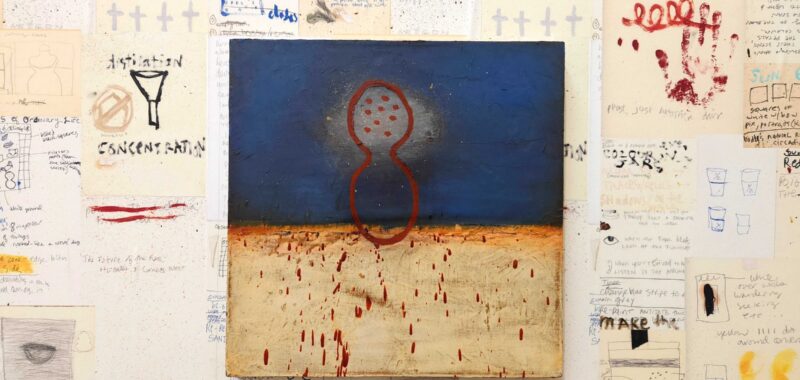I admittedly felt a little rough in a pair of beat-up Onitsuka Tigers and creased jeans when I arrived at the Battery Maritime Building for the third iteration of Independent 20th Century. In such a luxe venue, filled with equally ritzy visitors, I had to remind myself that I was here for the art. Thankfully, the aura of stuffiness that I projected onto the fair dissolved within minutes due to welcoming gallery assistants, friendly banter with other visitors, a little white dog with an admission sticker on her fur, and exceptionally thoughtful curation throughout.
Independent 20th Century, open now through September 8, premiered in 2022 as a retro complement to the original Independent Art Fair’s contemporary flare, platforming both established and undersung voices among visual arts from 1900 to 2000. This year, both South American and Australian artists were prominently featured across several domestic and international booths, provoking questions and dialogue about Indigeneity, natural resources, and tradition.

After reaching the fair floor, I was greeted by London gallery Alison Jacques’s materially diverse solo presentation of work by pioneering fiber artist Lenore Tawney, who worked alongside Agnes Martin, Robert Indiana, and Ellsworth Kelly, among others, at the Coenties Slip overlooking Manhattan’s downtown waterfront throughout the ’50s and ’60s. Jacques mentioned to me that she was showing at the fair for the first time, and was especially drawn to this location for its proximity to Tawney’s old stomping grounds.
“We’ve been able to bring a museum-like presentation of Tawney’s work that has been well-received so far,” Jacques told me, as visitors observed the shadows cast by the artist’s suspended woven tapestries and examined her bite-sized assemblage works and collage pieces, arranged on parallel walls at the entrance.
“It’s not common to be able to show at this level during a fair,” she continued. “We wanted to display a survey of the different media Tawney worked in and is remembered for in addition to her groundbreaking tapestries that elevated craft into fine arts.”



I coursed through the main space and was immediately ensnared by São Paulo gallery Gomide & Co’s dual display of works by Paraguayan ceramicist Julia Isídrez and Brazilian artist Maria Lira Marques on cream-colored walls and custom-designed pedestal fixtures. Isídrez’s animal vessels, which illuminate the biodiversity of the sparsely populated western region of Paraguay, were utterly darling with their roundness and playfulness. Associate Director Thamy Krüger Echigo told me that it was important for Isidrez to represent animals with their mouths open so that “they can speak for themselves.” Marques’s textured paintings, derived from natural mineral pigments, sing against the cream backdrops above Isidrez’s ceramics.
On the opposite corner of the room, Dutton gallery’s colorful dual presentation of outsider artists generated quite a bit of foot traffic, for good reason. More than a dozen mixed-media paintings framed with scavenged wood by late Australian artist Selby Warren, who lived, worked, and tinkered in the backcountry before picking up the paintbrush in his 70s, hung salon-style on a wall.

Beside that wall is a selection of botanically oriented drawings by late Bostonian artist Rose deSmith Greenman. Like Warren, she only began fastidiously creating art in her 70s, but she did so as a means of coping with Alzheimer’s disease. Gallery Founder Sonia Dutton, who represents both artists’ estates, told me that she believes both “are poised for museum surveys, as well as film and literary investigations.”
Of Warren specifically, Dutton noted that his first exhibition took place when he was 85. “It’s a really interesting example of someone who was incredibly cut off from the larger art world, but felt driven to make work for himself,” she said.
With 32 exhibitors, the fair’s tight and accessible curation was a breeze to maneuver, if not a pleasure. Additional standouts include Beck & Eggeling International Fine Art’s colorful and gilded presentation of Heinz Mack’s ceramics of the last few decades, Osmos’s ode to the cleverly confrontational Aboriginal artist and activist Richard Bell, Ippodo Gallery’s nautical group show overlooking the Lower Manhattan waterfront, and Galeria MaPa’s spotlight on Afro-Brazilian artist Abdias do Nascimento.





